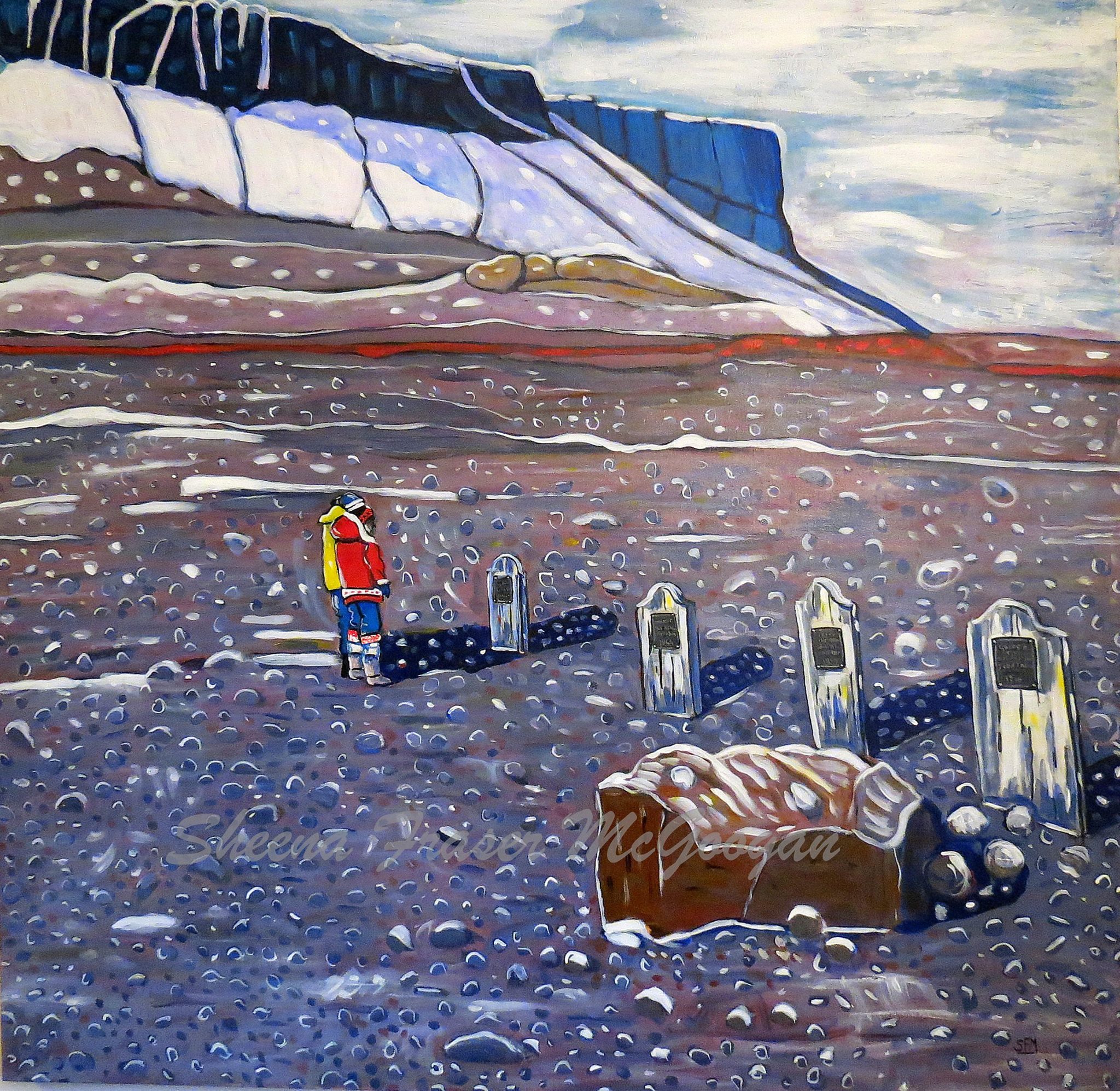Our Hero sacrifices modesty to preserve insightful review in Cyberspace
Dead Reckoning offers lively account of Inuit contributions to discovery of Northwest Passage
Review by Charlie Smith
(Georgia Strait, Oct. 22, 2017)
Charles Dickens is deservedly seen as the greatest novelist in Victorian England. The author of such masterpieces as David Copperfield and Great Expectations was also an influential social activist, campaigning for various reforms, including an end to child labour.
In light of this, who would have thought that Dickens and the widow of explorer Sir John Franklin would have conspired to cover up one of the worst debacles in North American exploration history?
Yet that’s exactly what Canadian historian Ken McGoogan has documented in his crackling new book, Dead Reckoning: The Untold Story of the Northwest Passage.
In this epic examination of the nearly 400-year struggle to find a sea route through the Arctic, McGoogan also offers page-turning portraits of several courageous and highly intelligent Cree, Dene, and especially Inuit people who are central to the story.
Indigenous giants like Matonabbee, Thanadelthur, Akaitcho, Tattanoeuck, Ouligbuck, Tookoolito, and Ebierbing—names unfamiliar to the vast majority of Canadians—take their rightful place in history alongside far more famous explorers, such as Martin Frobisher, Henry Hudson, Samuel Hearne, Franklin, and the first man who completed the Northwest Passage by sea, Norwegian Roald Amundsen.
What’s so remarkable about Dead Reckoning is how McGoogan demonstrates that some of the most successful northern explorers—notably Amundsen, Scottish surgeon John Rae, and Americans Elisha Kent Kane and Charles Francis Hall—were invariably those most eager and open to learning from their Indigenous guides and translators.
Many of the English explorers on the other hand, including Franklin, tended to be less open-minded. This reflected a colonial attitude that made them less able to adapt to the harsh and unforgiving northern climate.
[Read the published version of this review, complete with pix, by clicking here.]
[Painting above: Beechey Island by Sheena Fraser McGoogan]
Dead Reckoning is an outstanding 21st-century Canadian history that refutes myths about the Franklin expedition promoted by Victorian England, its modern-day media and academic apologists, and Dickens himself.
The book’s only serious shortcoming is its lack of detailed attribution because of an absence of footnotes.
According to McGoogan, one of the most crucial 19th-century developments in the discovery of the Northwest Passage was not the bumbling Franklin expedition that led to the sinking of the HMCS Erebus and Terror near King William Island in the late 1840s.
Rather, it was Rae’s recognition of a small strait separating what was previously known as King William Land and the southwestern side of the Boothia Peninsula. Had Franklin’s two ships taken this route rather than through Victoria Strait west of King William Island, the expedition might have reached Alaska rather than getting stuck in the ice.
More than a half-century later, Amundsen traversed this Rae Strait and later gave credit to Rae for making it possible for him to complete the Northwest Passage.
The Norwegian could do this in the early 20th century because pack ice from the north did not make Rae Strait impassable: this waterway was sheltered by the Boothia Peninsula and King William Island.
With great storytelling skills, McGoogan shows how Rae was thwarted in receiving sufficient credit for his discovery because of the machinations of Lady Jane Franklin.
Sir John Franklin’s widow couldn’t abide by Rae’s report that members her husband’s voyage ended up eating human remains.
So she summoned Dickens to tell a different tale, which generated widespread publicity and which was more in accord with the colonial mindset of the era.
“John Rae relayed Inuit testimony, as translated by William Ouligbuck, that many of Franklin’s men had starved to death while trekking south, and that some of the final survivors had been driven to cannibalism,” McGoogan writes. “Victorian England refused to believe this and, through Charles Dickens, suggested that the Inuit had murdered the weakened white sailors. Lady Franklin decreed that the final survivors had completed the Northwest Passage.”
Dickens maintained that Franklin’s men were murdered to paper over the truth. And this work of fiction by Dickens gave rise to the myth of Franklin as a great explorer and his subsequent commemoration in countless books and even in a statue in Westminster Abbey.
In fact, McGoogan demonstrates that Franklin was a rather uninspiring, sometimes blundering, seriously overweight, and hen-pecked former lieutenant-governor of Van Diemen’s Land (modern-day Tasmania) who was sent back to England for incompetence.
Franklin was only appointed to head the expedition to find the Northwest Passage in the mid 1840s because of his wife’s influence over the Royal family.
“In truth, Franklin discovered no Passage,” McGoogan writes. “The man himself died a few months after his ships got tracked in pack ice. And when his crews marched south to seek help, they forged no link in any chain.”
In many respects, the relentless and detail-oriented Lady Franklin is the villain in Dead Reckoning. But her ability to influence the British government and wealthy American Henry Grinnell to mount several expensive voyages in search of her husband actually accelerated the discovery of the Northwest Passage.
That’s because these subsequent explorers, including Rae, made genuine discoveries that enabled Amundsen to successfully complete his journey in 1906.
This is not the Canadian history that we learned in school. But it is a far more nuanced and objective view of Indigenous people in North America. For that reason alone, McGoogan’s book deserves wide readership in our country. But Dead Reckoning also deserves to be read because it’s so enthralling.
